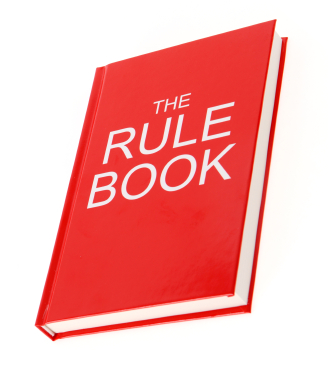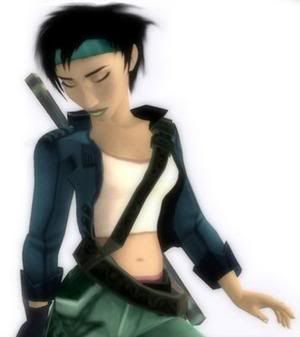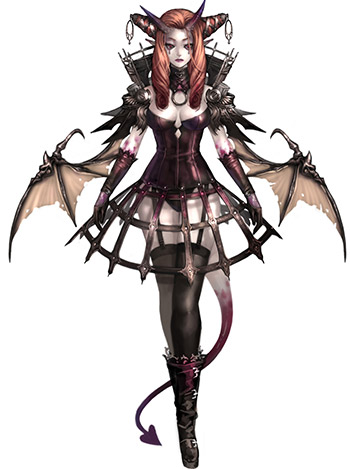Usually I try to review video games separately in a "unique" fashion rather than stuff them all into one blog, but sometimes I decide that I want to get to talking about a bunch of games. This is when the latter comes up. I usually do this because I get a wave of games and I have to talk about them all in one gulp or because I'm lazy to write a bunch of long reviews on each game. In fact I did that in the past around the same time, and I could safely say that it was actually a good way to get through my opinions of each game.
Saints Row The Third:
Why Did I Get This: I consider myself a bit of a ticking time-bomb that would burst out beating someone senseless for no reason. It isn't really helped with hormones as they have a wonderful tendency of throwing me in different plains of thoughts like I'm a ping-pong ball. When that happens, all that is left is regret, confusion and more anger that will be repressed until the day that I snap. Now there are various ways that I've controlled this. I've become somewhat snarky with commentary towards certain individuals, I've listened to calming music, I've created different things and I've improved emotionally. Despite all of those efforts, I still feel that I'm going to crack if so much as a speck of dust glides down on my head. So I'd need something that could perhaps take out my anger but at the same time, convert it into amusement. You know, like smacking a bunch of random people with a giant dildo. So I figured this sandbox game would fulfill that need.
Thoughts: I've never played Saints Row 2 so I can't talk about from a "fan's" perspective, but I have played GTA IV and GTA San Andreas. As many people said, Saints Row basically out GTA's GTA. Now for something to be more than what GTA allows you to do is one hell of a pitch. Pitches don't usually mean that it will turn out that way, but in Saints Row The Third's case, it is. The reason this happens is because there is a huge sense of absurdity that comes within. It can come from small details like when you hit a whole crowd of people, they seem to be catapulted across the map as if they were covered with Flubber or from the more noticeable features like a dildo for a weapon or facing off a bunch of armed mascots in a Japanese game show.

The game comes with a variety of missions, side missions, collectibles and weapons that keep you busy. You basically do the missions so that you can have more crazy fun with new weapons, vehicles and features. It also allows you to customize your character's appearance, voice, and clothing, so you can go about mixing and matching costumes...or running naked through the whole game. The missions can be fun as well as the side missions, but the hub is usually where you go just to see what sort of mayhem you can ignite. You can be as creative or as deranged as you please when you're confronted by civilians, cops or other enemies that just so happen to be laying about there. For example, you could rob a store and kill the owner, alerting the cops, then smack a police officer with a wooden bat, steal his police car, run him over with it, shoot a rocket at his car and then do a little victory dance. There really is a lot of chaos that you can cause in order to relieve yourself of everyday annoyances.

Saints Row The Third kind of suffers from not fully embracing it's silliness. For those that have played the game, this will sound odd because some of you thought it was too silly. That's not really a bad thing, not everything has to be completely grounded to reality, but here's the thing. It really doesn't take advantage of the quirky nature it's putting out. Whatever quirky elements there are in the game are few and it becomes a very lackluster and mundane experience when I use my rubber dick of pain on someone. That and it usually ends up belonging to characters or side missions, with both being a hit or miss on if you're getting something quirky and if said quirk will amuse you or make you want to gouge your eyes out. This became increasingly frustrating with the whole Prof. Genki Japanese show bit. Why the hell didn't they do something more with this? The potential for more bizarre weaponry and perhaps a creative "boss" battle could have come out if they played with it a bit more. Being creative with how you're going to screw the place up is still present, but it would have seemed much better if they gave you a few toys more to mess with in the actual game.
Other than that, the story is passable but not really that interesting, and you'll probably encounter some lulzy glitches on your way. If the game wasn't rushed and they took their time adding some more content rather than pulling the dickish DLC move, this might have been the most insane joyride ever. For what it turned out to be, it still delivers on all that unadulterated anarchy, but those loose screws ended up hitting me in the face. I removed myself from all the aggravation of life and had my fun, but I was still wishing that I could have had a little more.
Why Did I Get This: Simply put, I had fun with the past two games so it would only be natural that I would want to try Uncharted 3 and continue Drake's adventure.
Thoughts: Since this game borrowed a lot from it's predessecors and those were good, that makes this good by default. But it didn't really feel like anything that new was being brought to the table in terms of gameplay. It was the same third person shooting, parkouring, and exploring that was happening before. Not that there's anything wrong with that, you know. You shouldn't fix what isn't broken. I was just expecting maybe some new weapons or a new interesting mechanic you could fuck about with.
The story on the other hand does feel somewhat new in the same sense that making the same peanut butter and jelly sandwich is somewhat new because you're using two new loafs of bread and you use way too much PB&J. The basic sort of elements were sort of the same (save a few things) and it felt like it tried to add too much nail-biting insanity.
(spoilers) In the whole game, you end up losing a friend because of mind control, trying to escaping a burning building, losing another best friend because the villains want to use him to find the treasure, escaping a giant "cruiser" that's about to sink, crashing a giant plane, going through three trippy reality-bending segments and running through a city that's about to collapse.
(/spoilers) It felt as if instead of trying to make a suitable yet intense experience, it was trying to severely 1-up the other two games by throwing in old ideas that were incredibly insane and adding in new parts that would raise the stakes even more. It's not that putting too much balls-off-the-walls action is a bad thing, it just didn't feel like it was handled properly, it felt rushed.
Nonetheless, the game's campaign is a good length and it was fun seeing how the whole adventure would take its course. The story's interesting if only because it's absurd in how much they try to squeeze into it. That's not to say it wasn't fun to see all that would happen in the adventure, it was still decent. Even if the story feels like it's trying too hard to be grand, the multiplayer makes up for that sort of feeling of having too much candy.
Batman Arkham City:
Why Did I Get This: My sister was on the phone with me and she asked me what games I'd like to get. I told her either Mortal Kombat or Batman Arkham City. I told her Mortal Kombat because I already had a Street Fighter game and I wanted to get a test of both of the "top" fighters. (Then again what do I know, I'm a scrub, lolololol). I told her Batman Arkham City because I've played a bit of Asylum and if people said that City was basically going to be like Asylum but 100 times better, then I'm gonna have to go with City. Add in the fact that the trailer with Riddler made Nigma go from a semi-laughing stock to someone of a more threatening demeanor and I was even more hooked. Still, I would haven't been disappointed with Mortal Kombat. Knowing my sister, Arkham seemed more predictable.
Thoughts: The Riddler isn't as great as they made him out to be. That can be partially due to the design that they went with him and that can also be due to how he seemed less like a mastermind luring you into a grand trap and more like a whiny bitch when you'd solve his riddles. The trophies can also share the blame on why the Riddler wasn't as great as I wanted him to be, but that wasn't as big as the last two parts. He did sound somewhat threatening with some of the messages he'd sent out to you, but that's about it. I guess that's enough of me nitpicking, now onto the rest of the game.

Remember when I was complaining that Uncharted 3 was forcing greater stakes to make the game seem more epic? Well Arkham City didn't really do that. Yes, at times it felt like some of the events were trying to be bigger than one another, but it felt like it was easing into all the chaos that was coming from such an environment. It felt epic because there was proper timing to when the stakes would be risen. It was constantly building up one crazy shitstorm after another. The characters themselves are written well, but that's almost expected when talking about Batman (unless we're talking about Frank Miller, hyuck hyuck). Sure, I bitched about the Riddler, but the Joker's obviously better and has more screentime so I can smile at Hamill's hysterical Joker cackle after frowning at what I saw with the Riddler. Hugo Strange was very interesting to see as sort of the main antagonist in Arkham City mainly because I've never heard of him and he was equally as threatening as any other Batman villain.
Gameplay-wise, with all the crooks to beat up and sneak-attack, puzzles to solve, areas to glide through and gadgets to mess about, it feels quite strong. Each of the bosses you encounter are somewhat difficult, but you can overcome them if you do the usual "time your shit right" tactic that works with most bosses in most games. The difficulty does kind of go up and down at times, but it manages to provide a challenge to the gamer which isn't a bad thing. Succeeding in something that had to make you plan out your moves carefully is more satisfying because you had made a greater effort to overcome the problem. Everything just seemed to fall into the right places in the game. Except The Riddler. But like I said, it's just a nitpick. That, and even I, as a Riddler fan, have to admit that he wasn't all that special.
Why Did I Get This: Rather than having my sheep mentality of getting all dem popular games, I decided to go on a sheep mentality of following Yahtzee's caustically-coated reviews. I watched his review of Driver: San Francisco and noticed that while he was giving the game a proper critical jabbing, he did find himself liking the game. Since he's one of those "not-so-easily-impressed-snob" types, for him to enjoy a game means that it must be quite the game. It could be a guilty pleasure too, but I didn't really bother with details and got it.
Thoughts: For a driving game to leave a greater impact on me, it either needs to be like Mario Kart, like GTA or have something else to it that those two games don't have. The only other racer that did this was Need For Speed 2: Hot Pursuit, where you could play as a cop car chasing a perp. Driver did deliver with this "car-jumping" mechanic that allows you to jump into a different car in the map and control it. When it comes to certain missions in the game, this sort of idea works wonders because you can stop a car that's way ahead by getting into another car and smashing into it. This does get fun when you simply want to mess about with the cars, but it doesn't last long. The characters and the story aren't that engaging, but some of the missions do make up for that lack of interest.
Rayman Origins:
Why Did I Get This: Rayman has had a bit of trouble with Ubisoft ever since the Rabbids overshadowed him. Granted it was sort and I was okay with the first two Rabbid games, but Rayman was far greater than the Rabbids. Mostly because I hold Rayman 2: The Great Escape so near and dear to my heart that to see more of our armless-yet-not-handless friend would be good. I could start getting older games like the first Rayman and the third one, but then Origins came along and I completely forgot that there is such a thing as the PSN.
Thoughts: I really can't say much about this game to the extent that I did with the others. That's not to say I didn't like the game, I loved it. The music is wonderful, the gameplay is solid and the fun is present in the wacky graphics. The thing is that this game is just a simple platformer, so there isn't that much to go on about in great lengths. I can't really go to great nitpicks, because the experience was just captivating and for me and any problems that I encountered were my fault. Hell I can't even do much comparison as a fan of the Rayman games because I need to at least play the original one to make the proper comparison. Sorry.
Why Did I Get This: Well the 3DS came out and I wanted to start my collection with the expected platforming adventure of the Italian menace himself, Mario. I didn't really care for the 3D aspect or much of the other features (which is kind of weird if I want to justify to myself that the 3DS was a good idea), I just wanted to see how this game would fair out with all the other Mario games that I played back when I was a radical Nintendo fan.
Thoughts: I felt like I was breaking off as two personalities throughout the whole game. On the one hand, the game was fun. The music was standard cheerful, the enviroments, enemies and powerups were inventive and the platforming was great. On the other hand, I muted the music because it wasn't as good as the other games, some enviroments felt rehashed, enemies weren't as interesting, powerups didn't have much changed and were just collections of previous powerups and the platforming was piss-easy. I felt like I saw the other side that I neglected so much as a blind fan when I played this game. It honestly would get a bit annoying when I would one point love the game for the interesting level I was in and then hate it because of the overused Tanooki tail bit and the inconsistency of the levels in the world and the Special World bullshit it pulled once I "completed" the game.
It has come to a point where even though I'll like the game, I want something more creative to be done with Mario. Perhaps the next Mario game will add something new like Galaxy did, but it might end up banking on that concept like it did with Galaxy 2 or semi-failing like it did with Sunshine. But it feels like there's more to it. I want the game to have a semblance of challenge. I know it's directed for younger audiences, but difficulty in a game provides the end result of success to be much more sweeter. That sort of idea feels like I may be asking too much from Nintendo, and I might as well be asking for someone to mimic the Sistine Chapel's paintings in my own house. I'm not sure what I want now that I've made this transition. The people who bought will probably like it, but to me, it felt like it wasn't all that great or fun as my Nintendo fan would like it to be.































